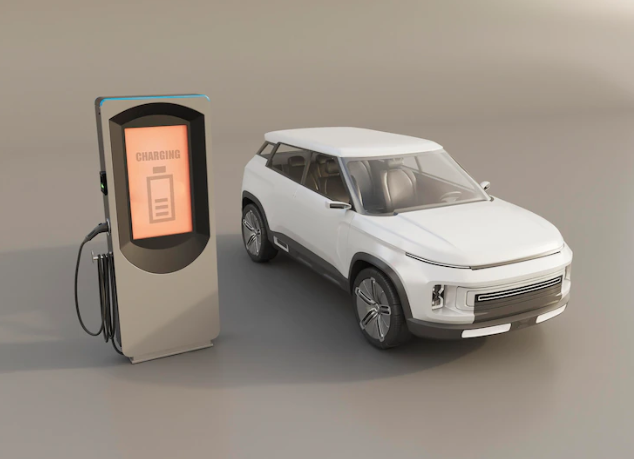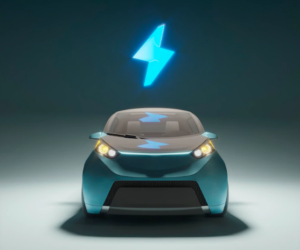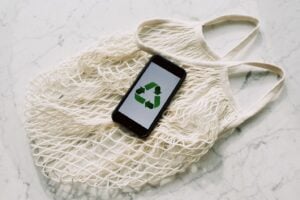February 01, 2023 / by FMP
Filed Under: Uncategorized
Is Tesla Stock in the Dumpster: An In-Depth Look at the Environmental Impact of Lithium Batteries

Tesla has had a tumultuous ride over the past few years as investors struggle to make sense of the company’s prospects in an increasingly volatile market. As uncertainty deepens, one question remains: Is Tesla stock heading into a tailspin?
While the jury is still out, it is worth taking time to consider another important factor related to the fate of the electric car giant – its environmental impact. To truly understand whether Tesla’s continued success can be sustained, we must explore their reliance on lithium batteries and what this means for our planet and its resources.
Today, we will look at how these energy sources are sourced, manufactured, and recycled in addition to their current uses by modern devices. If you want to know how Elon Musk’s Tesla is impacting the environment, read on!
Is Tesla Stock in the Dumpster?
Tesla’s cash reserves have been dwindling, leading some analysts to question whether or not Tesla can survive this downturn. For now, investors are holding off on buying shares of Tesla until there is more clarity about its future. However, if Elon Musk and his team can turn things around and get back on track with their production goals, there could still be hope for Tesla stock moving forward.
Despite recent volatility and negative news stories, Tesla’s stock price isn’t in the dumpster. The company has been able to weather short-term bumps while continuing to progress on its long-term goals. In addition, Tesla’s market capitalization remains high, indicating that investors are still confident about the company’s prospects. It appears that Tesla is here to stay for the foreseeable future. But at what price? We are yet to see that!
What are Lithium Batteries, and Why Are They Used in Tesla Cars?
Lithium batteries are rechargeable energy storage devices that use lithium-ion or lithium-polymer technology to power electronic devices. They are popular for their high energy density, lightweight, and long cycle life.
Tesla cars use lithium batteries, but not in all models. Some models of Elon Musk’s Tesla use Nickel-Cobalt-Aluminum (NCA) batteries composed of nickel, aluminum, and manganese. The LCO battery offers superior energy density and capacity performance, making it ideal for powering electric vehicles like Tesla cars.
How Do Tesla’s Lithium-Ion Batteries Impact the Environment?

Elon Musk, the CEO of Tesla, has revolutionized the electric car industry with innovative lithium-ion batteries. While these batteries are extremely useful for powering electric vehicles, their disposal presents a major environmental concern. Many of these batteries end up in landfills or dumpster rental sites where they can leach dangerous chemicals into the soil and groundwater if not properly disposed of.
The chemicals these batteries release in dumpster rental sites can enter the air if burned without proper safety precautions being taken first. Also, because these batteries contain valuable metals such as cobalt and nickel, they can be attractive targets for illegal mining operations that seek to exploit natural resources without regard for human or environmental safety concerns.
What Can We Do To Reduce the Trash Removal Efforts Related to Tesla Batteries?
As Elon Musk and Tesla continue to innovate in the world of electric vehicles, more people are beginning to ask: what happens when these batteries reach the end of their life cycle? Unfortunately, the answer is not a simple one. The recycling process for lithium-ion batteries used in Tesla’s cars is complicated, labor-intensive, and expensive.
But there are steps we can take to reduce our carbon footprint and ensure easier trash removal of these batteries, so they don’t end up in dumpster rental sites. Here are a few ways authorities can do easier trash removal of Tesla batteries:
Reuse & Refurbishment
The most effective way of trash removal from lithium-ion battery disposal is by reusing and refurbishing them. Technological advancements have made this possible, allowing us to repair faulty cells and components within existing batteries. This process can significantly extend batteries’ lifespan and prevent them from ending up in landfills or being subjected to hazardous recycling processes. Companies such as Ascend Elements specialize in this field, offering services from refurbishing damaged cells to replacing entire packs with new ones.
Recycling

Another way we can stop batteries from reaching dumpster rental sites is by recycling them for their valuable metals and minerals. While this method does not necessarily reduce waste from entering landfills, it does help minimize environmental damage caused by mining new resources for these materials.
To this end, Tesla promises that “none of your used batteries go to dumpster sites as we recycle them .”These recycled products can then be used as feedstock for other manufacturing processes or even reused in new battery packs if they meet certain standards. In 2019 this was brought up… we need to recycle lithium if we are going to use electric cars, read the article
Here: “Time to get serious about recycling lithium batteries.”
Responsible Disposal
In some cases, lithium-ion batteries may be so damaged that they are no longer suitable for reuse or recycling. In such situations, it becomes important to ensure that these cells are disposed of responsibly so that they do not cause any harm to the environment or human health when they enter landfills or oceans.
Research & Development
Research into alternative technologies can help reduce waste from discarded Tesla lithium batteries. This can be done by making it easier for consumers to replace their old cells with newer models without worrying about proper disposal methods or hazardous recycling processes.
Investing resources into researching innovative solutions, such as solid-state batteries that use less toxic materials than traditional Li-ion cells is smart. By doing this, Tesla can ensure that its products remain environmentally friendly while still providing superior performance and reliability compared to its predecessors.
In Conclusion:
The environmental impacts of lithium-ion batteries used in Tesla cars are a valid and important concern. Thankfully, Tesla is taking the issue seriously by investing in research and development to overcome some of these obstacles. The company is committed to increasing the proportion of sustainable energy sources powering its supply chain and products and utilizing regenerative braking technology.
From using recycled materials to developing more efficient production processes, they are attempting to reduce their carbon footprint while improving their marketability. Moving forward, it is our responsibility as consumers and citizens to be aware of the environmental effects of the new technologies we choose to use. With the help of companies like Tesla, who prioritize sustainable energy practices and meaningful mitigation efforts, we can strive for more efficient resources today and tomorrow. Want to read more? See our last blog about electric cars.
